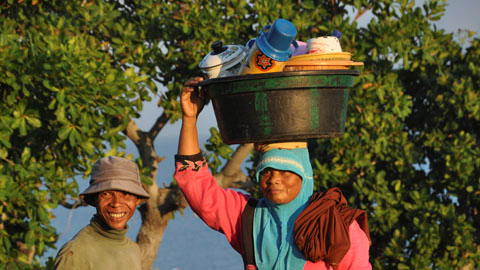IFC Agri-Insurance Expert Gary Reusche on Public Private Partnerships and Portfolio Approach

Farmers know that there will be years when the crop yields are reduced, or prices will be low. Perhaps they will diversify their crops, depend on livestock, or purchase a system to irrigate their crops. All these are ways to mitigate and reduce their risks. When there is no insurance culture or trust in insurance companies -and insurance companies themselves may not have extensive experience selling agricultural insurance - there is understandably little interest to purchase crop insurance. In such cases, it is the government who is the de facto insurer because crop losses of more than 50 percent are correlated, and whole regions can be impacted. During these years when production is depressed, farmers may not have enough to eat, food supply to the cities may be disrupted, and all governments have to locate funds and mechanisms to provide relief to the affected areas. When governments struggle under the burden of crises, international agencies will be invited to close the gap and provide international support. However, agricultural insurance can provide the protection and support for governments, farmers and lenders to plan effectively and pro-actively for these periodic episodes and be prepared.
Yet if farmers are not interested, and governments are not planning then what is needed to build acceptance for agricultural insurance? There is nearly universal agreement that the early stages of agri-insurance development are underpinned by lenders, such as banks and MFIs and input suppliers and companies at the top of a supply chain that need raw materials for their sales and profits. Yet, traditionally, lenders have been uncomfortable lending to farmers due to the many risks. Agri-insurance can protect lenders, while at the same time bringing other financial services (outreach, payment, information, data, networking) to the farmers.
Upfront costs for agri-insurance can be high because the administrative costs cannot be spread, or the product is new and reinsurers load higher because there is not enough data and experience. However, large volumes and increasing competition will eventually bring down prices, in addition to better data and product design.
To reduce agri-insurance costs, public-private partnerships (PPP) between insurers, lenders and governments are vital. Government participation can reduce the costs to design, promote, and reinsure agri-insurance products through such interventions as: providing weather and yield data for insurance purposes; engaging agricultural researchers to work on insurance designs; providing extension training on the value and use of insurance; reducing VAT or other fees; and providing a stop-loss thereby increasing the feasibility of an insurance company to acquire reinsurance and reduce costs. Unfortunately, however, in many countries the concept of a PPP in the agricultural sector is mostly on paper and has yet to be realized.
In addition to the role to be played by PPPs in reducing costs, current work by private sector companies with index insurance in developing countries increasingly demonstrates that bundling loans with index insurance at the portfolio level allows for commercial viability. This is a relatively new approach and has been popularized recently by the Global Index Insurance Facility (GIIF) program funded by the EU, Japan and the Netherlands.. The GIIF program is also working through IFC and the World Bank to provide the vital PPPs needed in developing countries to build nascent agri-insurance markets.
Figure below shows an actual situation in Ukraine, where the insurance rates vary by agro-climatic region, as well as the amount of the loans issued to each region. When combined into a single portfolio, and providing there is sufficient diversity in the portfolio, models can be calculated that will allow for a reduction in the rate. In addition, the determination of an optimum sum insured (which is multiplied by the rate to obtain the premium cost) based on portfolio analysis can result in a quality insurance product that is affordable and sellable. And, in fact, that is what GIIF is doing around the world. GIIF’s seven broker implementing partners are selling agri-insurance at the portfolio level which is providing lenders the risk mitigation they need to increase agricultural lending to farmers in Africa and Asia. And the GIIF program is working closely with governments and regulatory agencies to provide the necessary enabling regulatory and policy environment for agri-insurance, including new products like index insurance.

